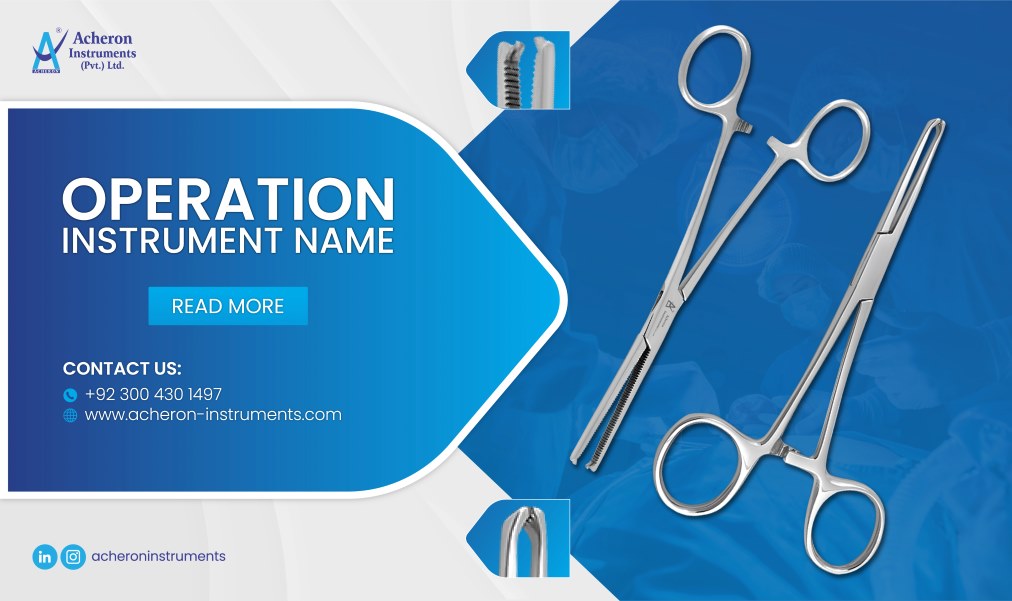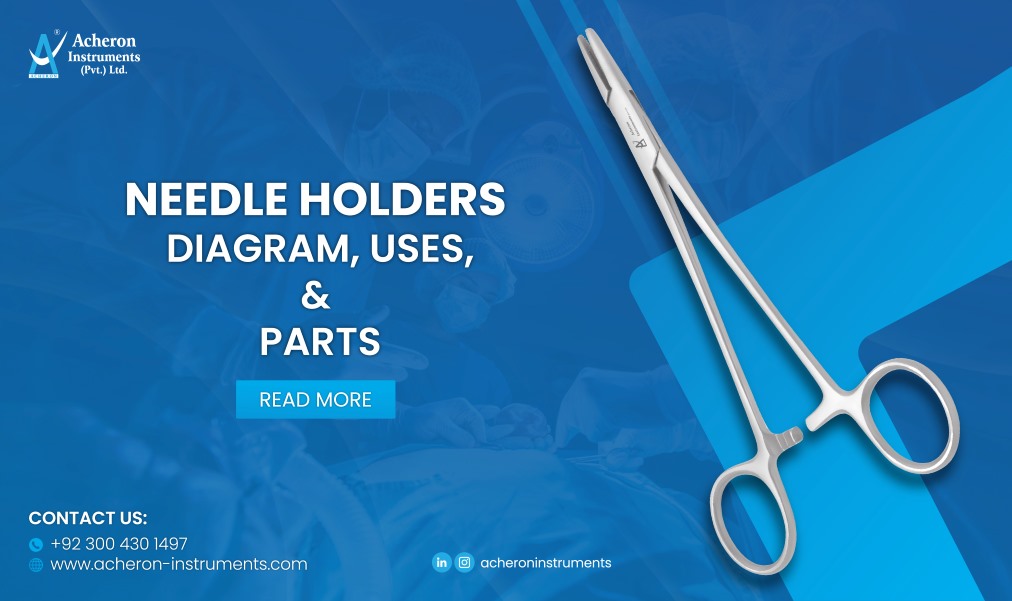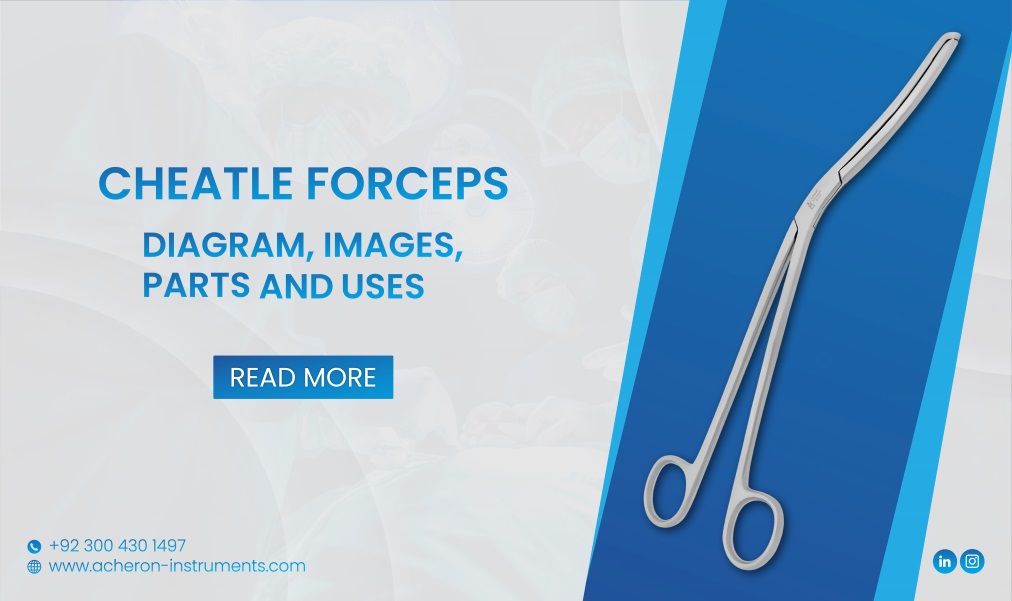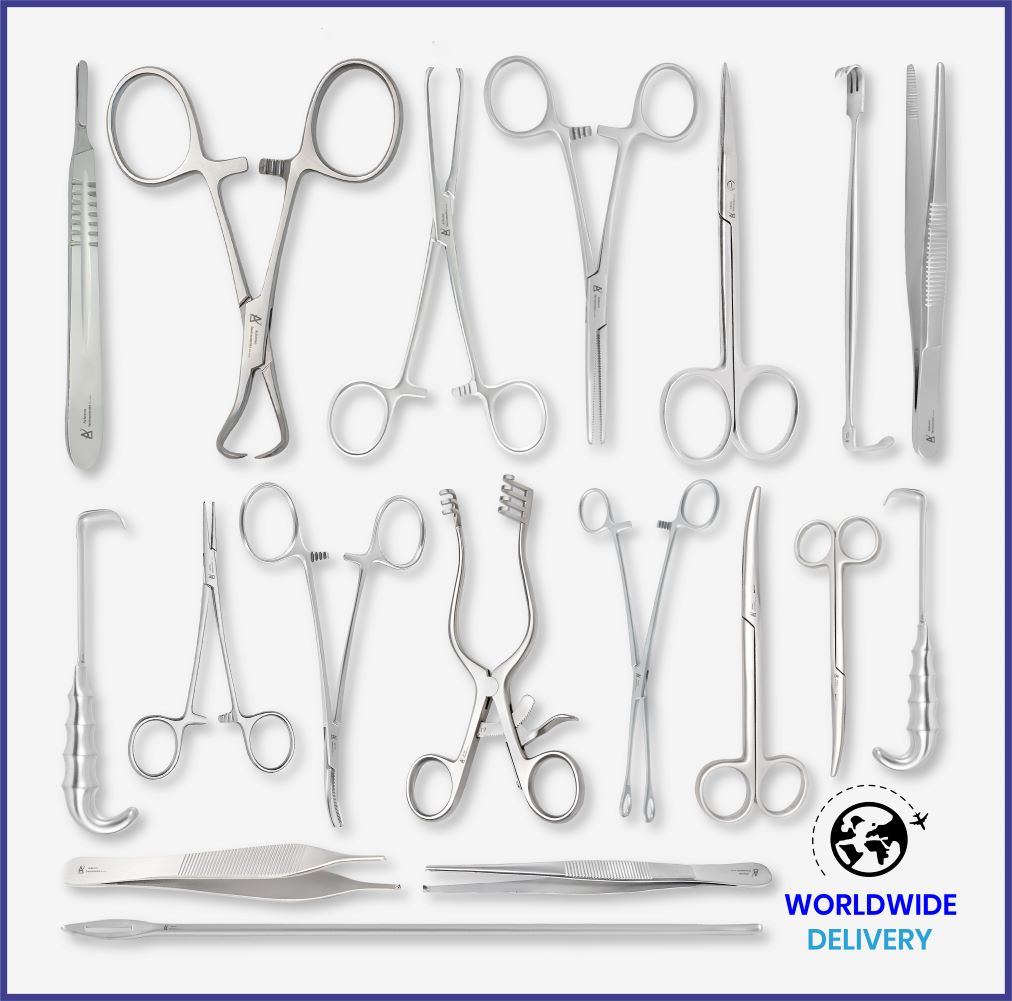
Surgical instruments are precision tools designed for performing various medical procedures with accuracy and efficacy. From the delicate maneuvers of microsurgery to the more robust requirements of orthopedic procedures, these instruments are indispensable in the hands of skilled surgeons. They come in a plethora of shapes, sizes, and materials, each tailored to specific tasks and anatomical needs. Whether it's clamping, cutting, dissecting, or suturing, surgical instruments play a pivotal role in ensuring surgical success and patient well-being. Their evolution over centuries reflects advancements in medical science, engineering, and material technology, continually refining and enhancing the surgeon's ability to heal and restore health.
What are the general instruments used in surgery?
There are various types of general surgical instruments used in surgery, each designed for a specific purpose. Some major general instruments used in surgery include forceps for grasping, scissors for cutting, scalpels for making incisions, needle holders for suturing, retractors for holding tissues hemostats for controlling bleeding, suction devices for clearing fluids, and surgical probes for exploring. Not only these, but other important instruments include curettes, speculums, dilators, drills, bone saws, etc.
What are the 5 tools used by surgeons?
The five basic tools used by surgeons are primarily useful in almost all surgical practices including forceps, scissors, clamps, retractors, and scalpels. These fundamental tools are a part of every surgical room toolkit. However, for specific kinds of surgical procedures, a more specialized set of surgical tools is required. For instance, in the case of orthopedic surgical procedures, surgeons usually require bone files, drills, mallets, etc.
What are the most common surgical instruments?
There is a vast array of surgical instruments used during surgical practices to accomplish multiple surgical procedures. Here is a list of a few commonly used surgical tools that are an essential and integral part of every operating room:
Scissors: useful for dissection and cutting purposes such as sutures and tissues
Forceps: the non-locking forceps are useful for grasping objects or tissues
Scalpel: useful for cutting tissues and making initial incisions
Clamps: Also known as locking forceps useful for providing hemostasis or holding tissues/objects
Retractors: useful for holding an incision open or holding back objects or organs for a clear surgical environment
Suction devices: help to maintain a sterile surgical field by removing debris and fluid
Speculums: useful for opening and holding body cavities during surgery or examinations
Needle holders: useful for holding surgical needles during suturing procedures
What are the 3 categories of surgical instruments?
There is a multitude of categories of surgical instruments that serve specific purposes as per surgical requirements. If we classify them, here are the three major categories:
Cutting and surgical instruments: such surgical instruments are used to cut soft tissues, skin bones, etc. Also, it includes tools used to dissect tissues along their anatomical planes. Surgical knives, scalpels, and scissors come under this category.
Grasping and handling surgical instruments: To get a clear view of the surgical field, surgeons grasp or hold tissues by making use of these grasping and handling surgical tools. The instruments that come under this category include tissue forceps, smooth forceps, and toothed/non-toothed forceps.
Retracting surgical instruments: the instruments that come under this category are greatly useful when surgeons have to retract the tissues or organs away without causing damage to them. Also. These tools assist surgeons to have a clear visualization of the surgical area. Gelpi retractors, Balfour retractors, Army Navy retractors, and Farabeuf retractors are some common examples.
How many types of surgical tools are there?
Numerous types of surgical tools are designed to suit specific surgical requirements and procedures. Here are some major types:
General surgery instruments: Scalpels, forceps, retractors, needle holders, suction devices, etc
Orthopedic surgery tools: bone saws, bone drills, orthopedic retractors, bone chisels etc
Cardiovascular surgery tools: forceps, scissors, cardiovascular clamps, cardiovascular retractors, etc
Neurosurgery surgery tools: curettes, elevators, microsurgery scissors, rongeurs, probes
Gynecology surgery tools: vaginal speculums, uterine curettes, laparoscopic instruments, obstetric forceps, colposcopes
Ophthalmic surgery tools: ophthalmic scissors, forceps, needle holders, iris scissors
Dental surgery tools: dental mirrors and probes, dental elevators, dental curettes, dental drills, dental carriers
Veterinary surgery tools: forceps, retractors, skin hooks, scalpel
What is the oldest surgical instrument?
The oldest surgical tools are dated back thousands of years ago. One of the oldest surgical instruments is the surgical knife dating back to around 8000 BC in the Mesolithic area. In those times, the oldest surgical procedure named trepanation was performed that involved drilling a hole into the skull that was believed to remove demons thought to cause ailments like headaches, melancholy, or epilepsy. Evidence indicates that flint knives were made for this procedure. Other than that scalpels made from bronze and other metals were also used by ancient civilizations such as Romans, Greeks, and Egyptians.
Who is the father of surgical tools?
Abu al-Qasim Al-Zahrawi, a Muslim physician of the 10th century is known as the father of surgical tools. He is known for his significant contributions to the field of medicine and is also known for conducting the initial thyroidectomy. Also, he dedicated the final chapter of his comprehensive book named “On Surgery” to surgical instruments in which he introduced over 200 surgical tools. From neurosurgical diagnosis and treatment to pediatric surgeries, Al-Zahrwai’s medical writings were known and appreciated globally, especially in Western countries.
How surgical instruments are sterilized?
There are different methods used to sterilize surgical instruments to ensure they are free from contamination or pathogens before use. Each method of sterilization has its limitations and advantages, the choice merely depends on certain factors such as the type of surgical tool. Here are the most common methods:
Autoclaving: It is one of the most appropriate, well-suited, and effective methods in healthcare facilities. Autoclaves (machines used for autoclaving procedures) use high-pressure typically ranging from 121°C to 134°C (250°F to 273°F) steam to kill viruses, bacteria, and spores on surgical tools.
Dry Heat Sterilization: This sterilization method involves exposing instruments to high temperatures without moisture. This method is not as common as autoclaving, however, it is suitable for tools that may be damaged by moisture.
Chemical sterilization: This method involves the use of liquid chemicals such as ethylene oxide gas or hydrogen peroxide gas plasma to eliminate microorganisms on surgical tools. This method is not as common as other methods, and it is useful for specific applications. Moreover, it is especially useful in situations where heat or gas sterilization is not practical.
Radiation sterilization: this method involves the use of ionizing radiation, such as gamma radiation or electron beam radiation to disrupt the DNA of microorganisms.










